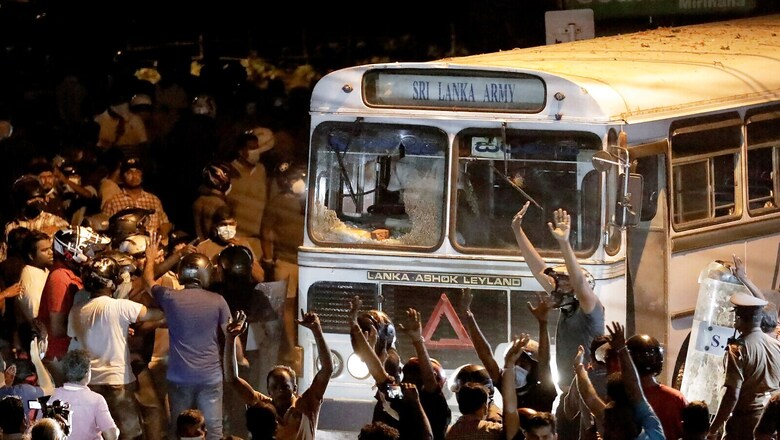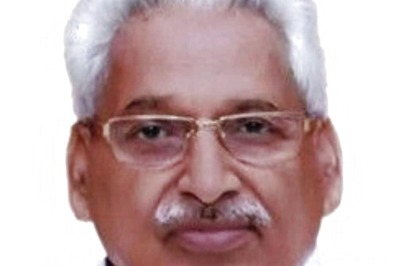
views
It always takes a tragedy and some violence for people to wake up and recognise that there is a problem. Same is true for Sri Lanka where the visuals of protesters gathering around the President’s place and asking for the removal of the Rajapaksa brothers from power has generated international interest in what’s actually wrong with the island country. Even for us in India, despite at a 21 mile-distance from Sri Lanka, the crisis had to reach the international media first before Indians took cognisance of the Sri Lankan problems.
People in Sri Lanka are facing 16-hour power outages, the country has run out of food and fuel, inflation has reached a staggering height, non-emergency surgeries have been cancelled and even medicines are in short supply. Sri Lanka is in a deep economic mess with a mounting foreign debt, huge trade deficit and a foreign exchange reserve that has fallen from $7.6 billion in 2019 to $2.6 billion in 2022. While the scale of Sri Lanka’s economic woes is truly humongous, there is a tendency across the world to use a geopolitical frame to understand this and announce China as default culprit. Well, China is indeed responsible for many problems in the country but the real reason for this mess is Sri Lanka’s own wrongdoings.
ALSO READ | Will Economy Cause Sri Lankan President Gotabaya to Trip and Fall?
Borrowing into a Mess
For us to understand this, we need to look at the facts of the matter. Sri Lanka has a shortage of essential items due to a lack of enough foreign exchange reserves to pay for it. It could have easily borrowed from the capital market like it has been doing from past many years. Only this time, Sri Lanka’s credit ratings have been downgraded and it can’t roll over its sovereign debt any more. Sri Lanka’s total debt is 119 per cent of its GDP, of which sovereign bonds make up the maximum share of 40 per cent. In comparison, the debt that it owes to China is just 10 per cent.
The real problem with Sri Lanka goes back to the end of the civil war in 2009. In 1977, Sri Lanka opened up the country to neo-liberal reforms but due to the onset of a 26-year-long civil war, the country was not able to focus on its economy. Even after the end of the civil war, Sri Lanka committed huge mistakes by taking economically imprudent decisions including a failure to implement a progressive tax regime, huge dependence on commercial borrowing to fund budget deficits and a failure to diversify and grow its export market.
From 1950 to 1970s, Sri Lanka’s focus on welfare and public goods was impressive and very unlikely any other South Asian country. After 1977, it started receiving foreign aid and concessionary treatment from international actors which helped the country write off its huge budget deficits. Once Sri Lanka graduated to a lower middle income country status and these goodies stopped, it resorted to borrowing off the commercial market to tide over the deficits.
This trend became stronger after 2009 when its commercial borrowings increased to 56 per cent of its total foreign debt in 2016 from just 2.5 per cent in 2004. Further, instead of implementing a progressive tax regime and widening the tax net to increase government revenue, Sri Lanka reduced the tax rates in 2019. Its Tax-to-GDP ratio fell to 8.4 per cent in 2020 from 18 per cent in 1990-1992. Due to falling revenues and a lack of public investment in key infrastructure, Sri Lanka became susceptible to foreign elements whose terms of business were always predatory in nature. But as the dominance of sovereign debts in Sri Lanka’s debt burden shows, China was just one of the actors and that too a minor one.
ALSO READ | As China Fishes in Lankan Waters, India Must Assess Cost and Benefit of Bailing out Neighbour
Failure to Diversify
Another suicidal blow to Sri Lanka’s economy came from its failure to diversify export basket and look for newer export markets. Diversified export basket and a multitude of options for export markets is a very South Asian problem, to be honest. It is only now that countries such as India and Bangladesh are also focusing on the same. But in the case of Sri Lanka, problem is much more serious. Since 2009, Sri Lanka has failed to integrate with the global market with exports’ share in GDP falling to 12 per cent from 33 per cent in 2000. Imports and exports as a percentage of GDP, declined from nearly 80 per cent to 45 per cent between 2005 and 2015.
Since 1990s, Sri Lanka has not developed a single product of competence for export while 50 per cent of its export basket is dominated by garments and tea. Even in terms of the export markets, there is a lack of diversification with focus on traditional markets in Western world and Middle East where demand is already shrinking. With such dependence on imports even for bare essentials, it is no surprise that Sri Lanka is in a huge forex crisis today.
So are we justified in blaming China for the Sri Lankan mess? In strictly political-economic sense, absolutely not. The drivers of Sri Lankan economy itself, imprudence of its leaders, their failure to execute a sound economic policy are to be blamed. China only made use of Sri Lanka’s situation. There is no denial here that China has a preference for such imprudent leaders and messed up economies where it can extract geopolitical advantages by extending “cheap debts”. But the current crisis has roots in Sri Lanka’s own distorted economic policies.
The author is a PhD in International Relations from the Department of International Relations, South Asian University. Her research focuses on political economy of South Asia and regional integration. Views expressed in this article are those of the author and do not represent the stand of this publication.
Read all the Latest Opinion News and Breaking News here


















Comments
0 comment